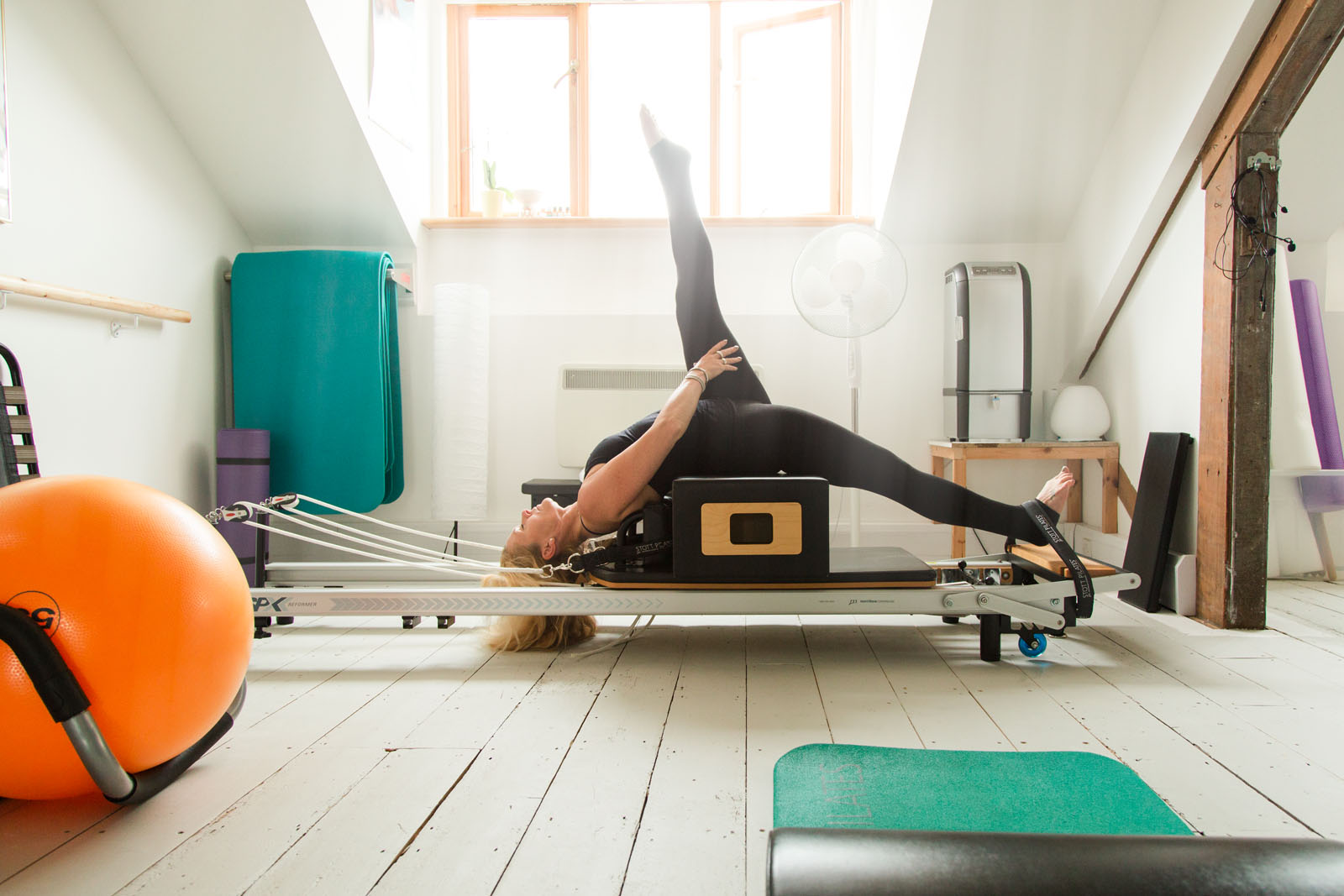Learning how to get the most out of your pilates practise means learning how to avoid the most common pilates mistakes.
Not Breathing Correctly
The majority of Pilates exercises are intended to flow and coincide with your breath. The movements of the spine and sequence of the exercises are worked around this concept. This is in order for the new oxygen to nourish the muscles and blood while clearing out the old, stale air on the exhale.
You should be able to breathe while using the muscles in your abdomen, because breathing happens in the lungs. It is not a case of needing to suck in or hardening your stomach, it’s about stabilising your pelvis and breathing in alignment. Many people new to Pilates find that it really helps to practice a gentle lift of the lower belly and a deep breath into the entire ribcage. A great way to learn this is by lying on your back, knees bent, feeling the inhale in the sides of the ribcage while allowing the back ribs to gently expand into the mat.
Pilates is fundamentally about the health, integrity, strength and flexibility of the spine. While in the same supine position described above, some people new to breath awareness find it helpful to feel the very subtle movements of the spine as they inhale and exhale.
Expecting to get it right first time
Pilates is a practice and often involves ‘un-learning’ old habits and patterns that are often the reason we turn to pilates in the first place. The best students are those who are opne minded and ready to give it a chance. The beauty of a practice is that it evolves and changes over time, but is always consistent.
Trying too hard
The idea of pilates is to let the core do what it’s meant to do – stabilize and provide a foundation for other muscles to rely on so they don’t have to over-work.
Overdoing the muscular effort cheats us out of working our deeper, stabilising muscles. Sometimes less effort allows the right muscles to work and other muscles to soften and release tension.
Any muscular tension, knotting, gripping, or cramping is a good sign you are trying too hard in one particular area. The key is to let go, regroup, and reconnect with your core and purpose of the movement, and then proceed more mindfully.
With practice you will learn that it’s possible to relax and yet still strengthen your body at the same time.
Momentum
The idea of Pilates is to control with your muscles – which is the opposite of momentum. In fact, Joe Pilates originally called his practise Contrology! He taught the art of mindfully controlling movements. The movements can be done as quickly as one can control them. Do your best to not swing, fling, or jerk into any movement. On the Pilates apparatus the springs encourage you to control the movements. With the mat work it’s different because you need to create your own imaginary sensation of resistance. Hold on with the core as you extend away from it with control, as with the side kicks or leg circles.
Distractions
Try to keep distractions to a minimum so that you can get the most out of your session, whether at home by yourself or with an instructor. If there is something stressing you out, or you have a list of things that need to get done, or you are worried you might forget something, write your thoughts or tasks down and try to forget about them for your Pilates time. Come back to it after with a new perspective.
Forgetting what you core really is
Your core is not just your stomach. It’s the deep muscles of your abdomen, your ribcage, back, shoulder blades, hips, buttocks, and pelvic floor. Just because someone has a rippling six pack does not necessarily mean they have a strong core. Your core is the foundation and base for other movements. Joe Pilates called the core the powerhouse for this very reason. Having a strong core promotes good alignment which in turn prevents peripheral muscles from overworking and straining.
Leaving what you’ve learnt in the studio
Whether it be improving your balance, a particular sport such as running, relieving joint or muscle pain or rehabilitation from pregnancy and childbirth, Pilates can help you in every aspect of your life.That is why I always take the time to have a full and thorough consultation with my clients, to learn how their practise can continue to help them after they’ve walked out of my studio door.
Even if you sit at a desk all day long, the principles you learn in Pilates can help you to sit and stand with more strength, balance and alignment.
Pilates can help you way beyond your workout.



Every tip for improving our Pilates classes is GOLD… so thank you for this great article!
[…] Source: https://pilatesstudiosuffolk.co.uk/common-pilates-mistakes/ […]